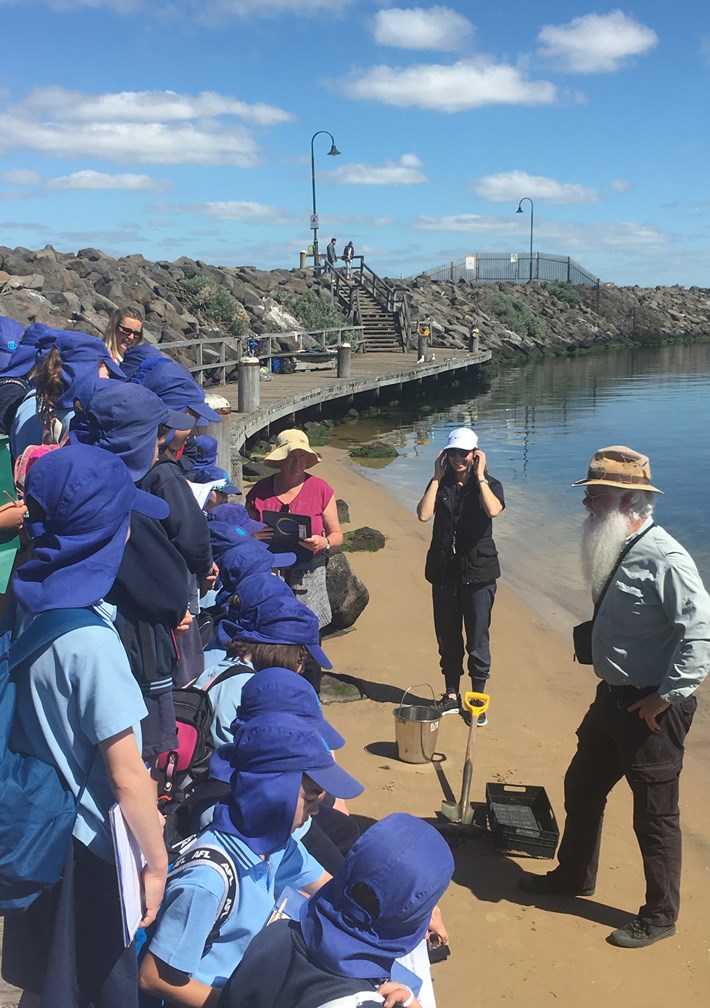A City that is adapting and resilient to climate change
We will work with our community and partners to adapt to the impacts of a changing climate.
What we’re doing
Below are the latest actions from the February 2022 Climate Action Update.
Investing in our assets
- Develop new standards to make Council’s assets, including roads and buildings, more resilient to climate change.
- Planning for the future of our foreshore to be resilient to climate change, including updating our Foreshore Management Plan.
- Ensuring our pipes and pits function at 95 per cent capacity to minimise flooding and install pits to clean pipe infrastructure effectively.
Working with our community and partners
- Working with the Victorian Government to develop a Coastal Hazard Assessment to understand the impact of climate change on the Bay and foreshore areas.
- Working with Melbourne Water, other councils and the Victorian Government to update modelling and flood overlays to ensure we use the best available science on climate change in decisions about infrastructure planning.
- Collaborating with Victorian Government and other partners develop the Fishermans Bend precinct as a leading example of environmental sustainability. Fishermans Bend precinct is being developed as a leading example of Australia’s largest urban renewal Green Star Community.
- Delivering the Environmental Leaders program to support community members develop and lead their own sustainability action projects. The Environmental Leaders course has been running since 2017.
- Partnered with Melbourne Water and the Cities of Kingston, Bayside and Glen Eira to deliver actions in the Elster Creek Flood Management Plan, such as a community campaign with letters sent to households, schools, and sporting clubs, with a map showing areas at risk of flood.
Changing how we deliver our services
- Partnering with the South East Councils Climate Change Alliance to deliver the ‘Resilient Communities Program’ aimed at understanding climate change risk to local communities and building community resilience (funded by the Minderoo Foundation)

The Port Phillip EcoCentre delivers sustainability programs that educate and empower our environmentally aware community. Pictured: The Port Phillip Baykeeper gives a presentation to local school students.
What we have done
Recent examples of how we are fostering a City that is adapting and resilient to climate change:
- 18 schools in Port Phillip learnt more about the environment and sustainability by participating in programs delivered by the Port Phillip EcoCentre in 2020/21
- 389 assessments of planning applications against sustainable design standards in 2020/21.
- 5,991 road segments 224 buildings, 27,458 drainage pits and pipes and 494 open spaces reviewed as part of our 2020-21 Asset Vulnerability Assessment.
- Installed more than 1.6 km of dune fencing which has allowed dune grasses to grow and stabilise more than 1000m2 of sand along the foreshore.
The impacts of climate change
Port Phillip is already experiencing the impacts of climate change.
Since 1950 globally:
- Temperature increase: 1.2 to 1.4°C
- Rainfall decrease: 10 to 20 cm
- Sea level rise: 8 to 20 cm
2019 was:
- Australia’s hottest year on record with a 1.52°C increase above the long-term average
- Australia’s driest year on record with 40% less rain than the long-term average
Looking ahead
Climate change projections by 2050:
- Temperature increase and double the number of hot days --> leading to health impacts, fire risks and heat-related deaths
- Extreme weather: More extreme storms and intense downpours with declining winter rainfall --> Leading to property and infrastructure damage, biodiversity loss, water shortages, disruption to services and safety issues
- Rising sea levels: Increase by around 24 centimetres --> Leading to property damage, erosion, loss of open space and safety issues
Sources:
- Victoria’s Climate Science Report 2019
- Under a high emission scenario - Victoria’s infrastructure strategy 2021-2051.